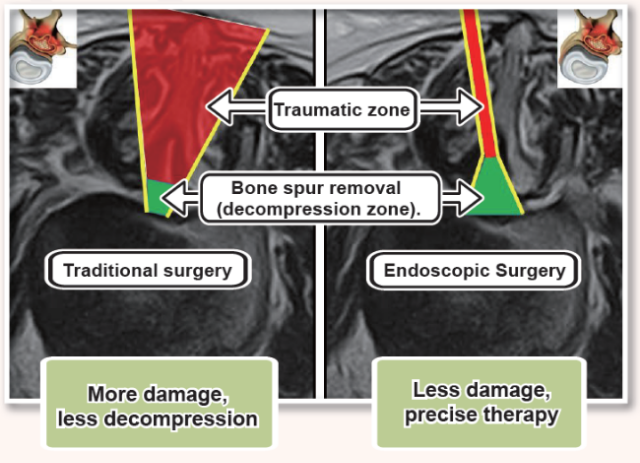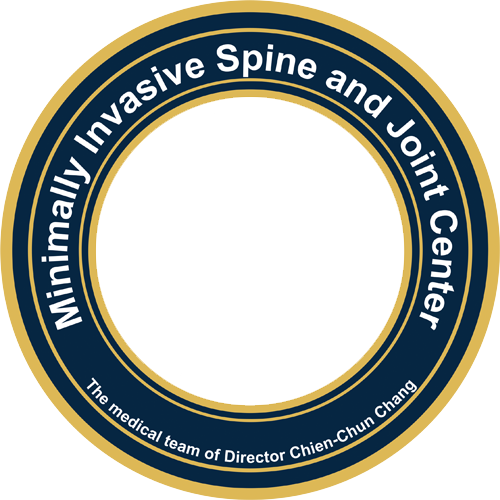
Today, minimally invasive endoscopic spine surgery has evolved significantly, offering patients an alternative that involves smaller incisions and reduced nerve damage. Common indications for this procedure include lower back pain, sciatica, and lumbar spine disorders.
◎Key Advantages of Surgery
-Incision size: only 1 cm
-Same-day ambulation
-Discharge the following day
-No rehabilitation required

__25A17RmHTO.png)


Illustrating Endoscopic Surgery: A Visual Comparison
-
 Less Damage
Less Damage -
__25A17EYhxo.png) Smaller Incisions
Smaller Incisions
Comparing Traditional Open Surgery and 3D Computer-Assisted Minimally Invasive Endoscopic Spine Surgery
| Conventional Surgery | 3D Computer-assisted Endoscopic Surgery | |
|---|---|---|
| Blood Loss | 500ml | 10ml |
| Incision Size | 5-10cm | 8mm |
| Anesthesia Method | General Anesthesia | Local or General Anesthesia |
| Hospital Stay | At least 4-6 Days | 2 days |
| Postoperative Rehab | Longer Recovery Period | No need |
Q1.What is the difference between minimally invasive endoscopic spine surgery and traditional spine surgery?+
Advantages of minimally invasive endoscopic spine surgery include:
- Less tissue damage: Compared to traditional surgery, the surgical pathway is only 8mm wide, resulting in minimal soft tissue and muscle disruption. Most patients can get out of bed on the day of surgery and be discharged the same day or the next day. Retrospective studies have shown that, compared to traditional surgery, endoscopic surgery allows patients to return to work sooner, experience less postoperative back pain, have shorter hospital stays, and spend less time in surgery.
- Smaller incisions: The incision is approximately 1cm.
- Option for local anesthesia: Surgery can potentially be performed under local anesthesia, reducing the risk of nerve injury during the procedure.
- Enhanced visualization: The magnification provided during surgery allows for clearer visibility of nerves, reducing the risk of nerve injury.
Q2.How soon can I get out of bed after spine surgery?+
Minimally invasive spine surgery allows patients to get out of bed sooner than with traditional surgery. Approximately 98% of patients can get out of bed the day after surgery.
The hospital stay ranges from 1 to 5 days post-surgery, depending on the patient’s condition and the type of procedure.
As literature suggests, minimally invasive surgery significantly shortens both hospital stays and recovery periods.
Regarding rehabilitation, due to reduced soft tissue damage, the rehabilitation period is greatly shortened. In some cases, rehabilitation may not even be necessary.
Q3.How soon can I be discharged after minimally invasive spine surgery? How long does it take to recover? Is rehabilitation necessary?+
Minimally invasive spine surgery allows for a faster discharge compared to traditional surgery. The hospital stay typically ranges from 1 to 7 days after surgery, depending on the patient’s condition and the type of procedure performed.
Overall, research shows that minimally invasive surgery significantly shortens both hospital stays and recovery periods compared to traditional surgery.
Regarding rehabilitation, due to less soft tissue damage, the recovery time is significantly reduced. Some patients may not require any rehabilitation following minimally invasive procedures.

















